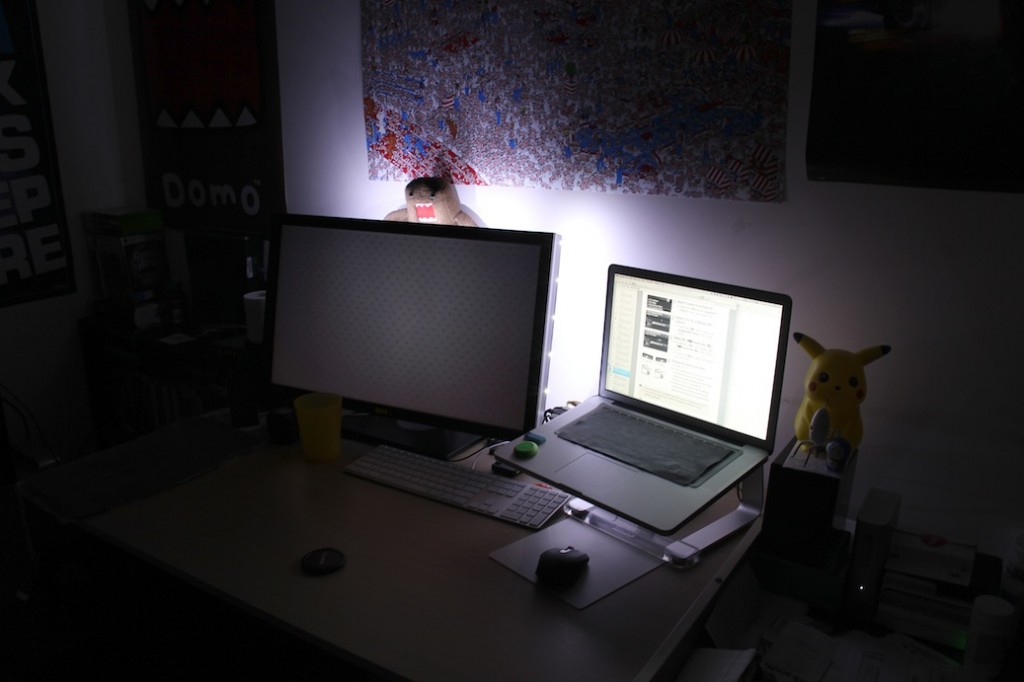A Little Bias
For the past few months now, I’ve been experimenting with something called bias lighting for my computer displays. All the cool kids are doing it, so I thought I would do the same.
Now it’s gotta be said that I spend what probably amounts to an unhealthy amount in time on front of LCD displays, if I’m not looking at my two LCDs on my desk, I’m staring at my iPhone on the bus, in the street, in the car, wherever.
The vast majority of my time, though, is spent in front of my displays at home: a decently-sized Dell 27-incher, and the 15-inch LCD of my MacBook Pro. They’re not the best match-up size wise, but going back to a single display when I’ve been using two for the majority of my computing life would be painful. There was a period where I went back to one due to reading something about single-displays being more productive. Needless to say, that experiment didn’t last very long — but I digress.
The theory behind bias lighting is that it’ll increase the perceived contrast of the display, as well as relieving eye-strain. It has a few other effects as well but those two are the main ones I’m really interested in, particularly as the lights in my room stay off for the most part (yes, my LCD tan is working out very well, thank you).
So I guess the question you’ve all been waiting for: how well does bias lighting work in practice?
The answer? I’m not exactly sure. Like I said, I’ve been using it for a couple of months now, and there’s definitely no discernible difference. Perhaps my piddly little 6-LED strips aren’t bright enough to have an impact on my gargantuan 27-inch display, perhaps I’m sitting too close to the monitor for them to make any kind of a difference, or perhaps I was expecting too much out of bias lighting in the first place.
Perhaps I’ll notice a difference when I turn them off for a month or so – but that’s for another time.
